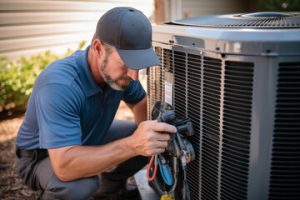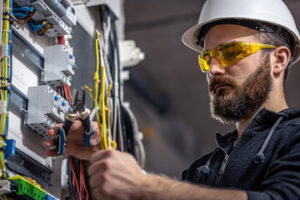Foundation Repair Murfreesboro TN has entered a new age of precision and innovation. Advanced solutions now replace outdated trial-and-error fixes. Engineers and builders are adapting to shifting soil patterns and changing climate conditions. These changes are redefining how foundations are analyzed and stabilized today.

The need for customized foundation assessments is more urgent than ever. Soil composition varies widely from property to property. This requires a tailored strategy instead of general fixes. Professionals are now using subsurface scanning for precise diagnostics.
Subsurface scanning uses radar to detect voids and movement. It identifies early signs of instability before cracks even appear. This early detection saves both time and long-term costs. The method also reduces invasive digging.
Micro-pile technology is reshaping how deep foundations are repaired. These small-diameter piles go deeper than traditional ones. They anchor into more stable layers below shifting soils. This minimizes disturbance around the home.
Hydrostatic pressure relief has become essential in wet climates. Water buildup against foundation walls causes cracking. New systems now direct water away without compromising structure. This approach combines drainage and reinforcement seamlessly.
Foam injection is a popular method for lifting sunken foundations. It involves injecting polyurethane foam beneath slabs. The foam expands and lifts the concrete evenly. It’s clean, quick, and long-lasting.
Traditional underpinning methods are also being refined. Engineers now use digital sensors during the process. These sensors monitor movement in real time. Adjustments can then be made instantly for stability.
Robotic equipment is making foundation repair faster and safer. Machines can enter tight crawlspaces without harming the structure. They perform tasks once done by hand, with more precision. This reduces labor costs and error rates.
Data-driven repair planning is replacing guesswork. By analyzing movement patterns over time, contractors predict future shifts. This foresight informs stronger repair strategies. It also builds homeowner trust in long-term solutions.
Foundation repair isn’t just about stability anymore. It’s also about energy efficiency. Poor foundations lead to insulation gaps and air leaks. Correcting these restores energy balance and lowers utility bills.
Concrete mixtures are seeing major upgrades too. New blends are designed to resist weather, shrinkage, and pressure. These advanced materials extend the life of repaired foundations. They’re also more eco-friendly and durable.
Some companies are experimenting with 3D-printed components. These printed supports fit custom foundation contours perfectly. They speed up installations and reduce waste. Although still emerging, this approach holds great promise.
Sensor networks in foundations now offer remote monitoring. Homeowners receive alerts if the foundation moves abnormally. This gives peace of mind after repairs are complete. It also ensures accountability among service providers.
Post-repair landscaping is now part of the plan. Changes in grade or drainage can undo good foundation work. Experts now evaluate surrounding terrain post-repair. They implement grading adjustments to prevent reoccurrence.
Shifting temperature zones require new insulation techniques. Foundation materials expand and contract with heat changes. Foam-based barriers are being added as a buffer. These protect both structural and thermal integrity.
Some engineers now use geogrids beneath slabs for added strength. These grids distribute loads more evenly over loose soils. They reduce the likelihood of settlement. Installation is quick and minimally invasive.
Digital modeling is helping predict how foundations will react. Simulations test how repairs will perform under various stresses. This minimizes risk before actual work begins. It ensures that every intervention is evidence-based.
Many contractors now offer foundation audits. These annual inspections catch early warning signs. Tiny shifts or cracks can be corrected immediately. Preventive care saves thousands in future repairs.
Eco-conscious homeowners are influencing repair materials. Biodegradable polymers and recycled aggregates are gaining traction. These options lower the environmental impact of repairs. They’re effective and align with green building codes.
Some innovations focus on stabilizing nearby trees and roots. Root systems often disrupt foundations unintentionally. New barriers redirect root growth without harming the tree. This keeps both the house and environment safe.
Climate-aware foundation designs are gaining momentum. Coastal areas face salt corrosion while inland zones face drought shifts. Repairs now reflect local environmental risks. Customization is key in today’s foundation solutions.
New adhesive systems are replacing mechanical fasteners. These adhesives create stronger, more flexible bonds. They’re especially useful in repairing cracked foundation walls. The finish is also cleaner and more visually appealing.
Engineered backfill is now being used during excavation. This material compacts better and drains faster. It minimizes future settlement around repaired areas. It’s a smart upgrade to outdated loose fills.
Advanced carbon fiber straps are being used to support bowing walls. These straps bond tightly to the concrete surface. They’re thinner than steel beams and more discreet. Despite their size, they offer immense tensile strength.
Drone surveys are becoming popular in large-scale properties. Drones map out soil shifts and surface conditions. This data helps contractors plan more accurate interventions. It’s a quick way to gather actionable insights.
Some specialists now offer AI-generated repair schedules. These schedules adapt to local weather forecasts and material curing times. This reduces delay and maximizes efficiency. Repairs finish faster without cutting corners.
Moisture sensors embedded in foundation walls now provide real-time updates. When moisture levels rise, systems trigger alerts. This allows rapid response before damage escalates. It’s a game-changer in water-related foundation issues.
Training programs are evolving to meet new repair standards. Professionals must now understand sensors, data tools, and smart materials. Certification requirements have increased. This leads to higher-quality service delivery.
Soft-soil foundations are now being strengthened with chemical grouting. This method injects solidifying agents into weak zones. The soil becomes firmer and more load-bearing. It’s ideal for flood-prone or reclaimed lands.
Seismic anchors are now a must in earthquake zones. These reinforced pins resist lateral movements. When installed properly, they reduce the impact of tremors. This protects not only the foundation but the entire structure.
Weather-responsive coatings are applied to foundation surfaces. These coatings expand or contract based on the temperature. They prevent cracking during extreme seasonal changes. Their application adds resilience to the structure.
Real estate developers are using foundation data to price homes more accurately. A well-repaired and well-monitored foundation adds value. Buyers now look for repair reports during inspections. Transparency about repairs builds buyer confidence.
Home automation systems are now integrating with structural monitoring. Smart hubs now alert homeowners to foundation activity. This real-time sync is reshaping property management. It keeps the structural health of homes under constant watch.
Public awareness of foundation risks is increasing. Educational campaigns show the importance of early repair. As more people learn the signs, interventions happen sooner. This collective knowledge improves neighborhood safety.
Temporary stabilization methods are also improving. Emergency supports can now be installed within hours. These offer short-term safety while permanent solutions are scheduled. It bridges the gap between detection and resolution.
The future of foundation repair lies in predictive analytics. Machine learning models are already processing historical damage patterns. These models guide engineers in preemptive design. Soon, issues might be fixed before they ever happen.
Customized post-repair care kits are being introduced. These include crack fillers, monitoring guides, and drainage instructions. They empower homeowners to take active roles. With proper care, repaired foundations remain stable for decades.
Mobile apps now allow homeowners to track repairs in real time. Every step from diagnosis to execution is logged. The transparency builds trust and helps with future maintenance. It’s a digital leap for customer satisfaction.
Collaboration between material scientists and engineers is growing. New products are being tested under real-world pressures. Their performance is documented in live field studies. This partnership is driving continuous innovation.
Despite all these innovations, education remains crucial. Property owners must understand what lies beneath their feet. Foundation repair is no longer reactive, but proactive. This shift transforms how we build and how we maintain structures.
As construction trends evolve, so must foundation repair. Flexibility and customization will define the future. With smart technology and forward-thinking, stability becomes a science. The foundation is no longer the end, but the beginning.



